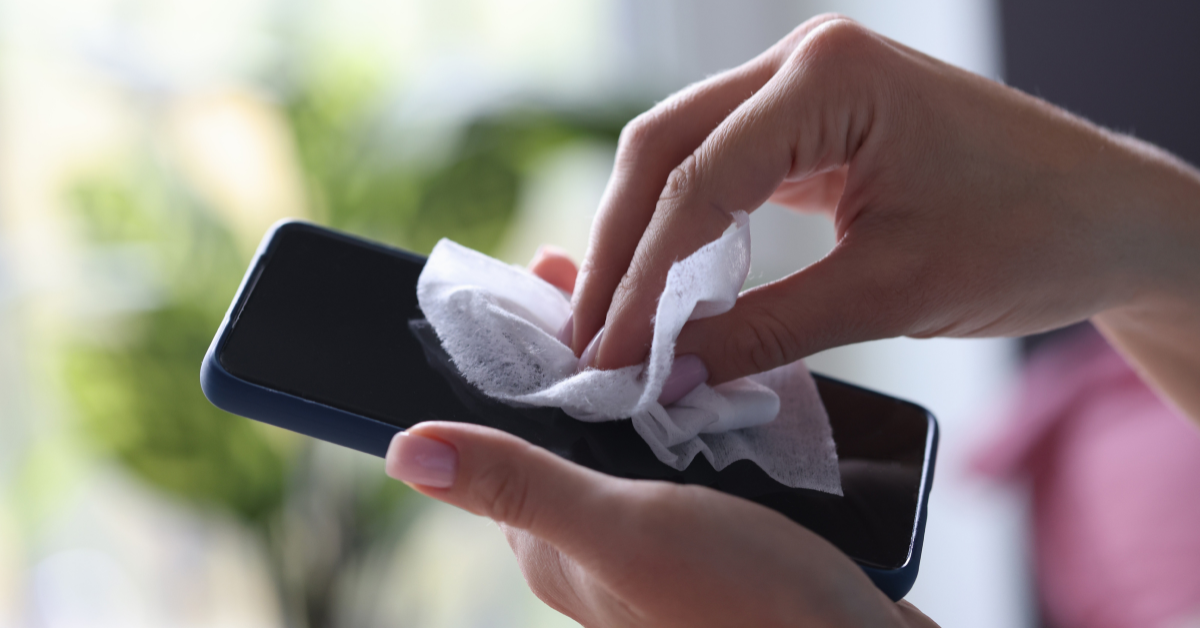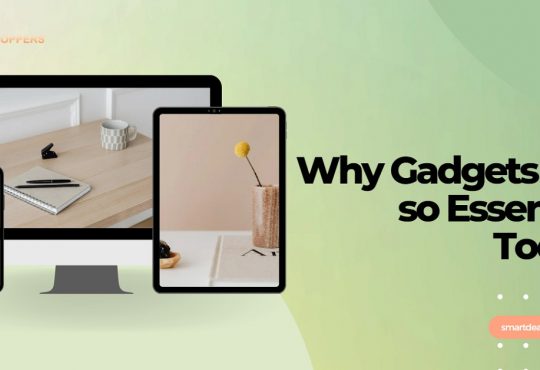
Smartphones are indispensable in our daily routines. From managing schedules to staying connected with friends and family, these devices play a crucial role. However, their constant use makes them vulnerable to damage and theft. Whether you’re juggling a busy lifestyle, working from multiple locations, or just going about your day-to-day activities, finding effective ways to protect your smartphone is crucial. In this article, we’ll explore practical strategies to safeguard your Smartphone, ensuring it stays in top condition and secure against potential threats.
From cracking screens to losing your phone altogether, the risks to your smartphone are numerous. The good news is that you can take simple yet effective steps to mitigate these risks. We’ll delve into straightforward methods that fit seamlessly into your routine, so you can keep your smartphone safe without disrupting your busy life. Read on to discover practical tips that will help you maintain the longevity and security of your device.
8 Practical Tips to Safeguard Your Smartphone
1. Invest in a Quality Case
A durable case is your smartphone’s first line of defense against accidental drops and impacts. Here’s why it’s essential:
-
- Shock Absorption: A good case absorbs shocks from drops and bumps, reducing the risk of screen cracks and internal damage.
- Enhanced Grip: Many cases provide a better grip, minimizing the chances of accidentally dropping your phone.
Types of Cases to Consider
- Rugged Cases: Designed for maximum protection, often with reinforced corners and shock-absorbing materials.
- Slim Cases: Offer basic protection while keeping your phone’s profile sleek and stylish.
- Wallet Cases: Combine phone protection with extra storage for cards and cash.
Casetify Protective Cases
Casetify is renowned for its stylish and protective cases, blending functionality with fashion. Here are some popular Casetify options:
- Impact Cases: Known for their high-level protection, Casetify’s Impact Cases feature a dual-layer design with a shock-absorbing material that cushions your phone from drops. They also come with a raised bezel to protect your screen and camera.
- Ultra Impact Cases: For those seeking extra durability, the Ultra Impact Cases offer enhanced protection with a 9.8-foot drop test certification. These cases include additional corner cushioning for maximum impact resistance.
- Customizable Cases: Casetify allows you to design your own case, combining personalized style with robust protection. Choose from a variety of patterns and prints while ensuring your phone is safeguarded.
Bouncy Cases
For an extra layer of protection, consider Casetify’s Bouncy Cases:
- Enhanced Shock Absorption: The Bouncy Case features a flexible and cushioned bumper that provides superior shock absorption, reducing the impact of drops.
- Durable Materials: Made from high-quality, durable materials, these cases offer long-lasting protection while maintaining a slim profile.
- Vibrant Designs: Bouncy Cases are available in various vibrant colors and patterns, allowing you to keep your phone both secure and stylish.
Casetify’s Bouncy Cases are ideal for those who want robust protection combined with eye-catching designs, ensuring your phone remains safe during daily activities while standing out from the crowd.
2. Use a Screen Protector
Your smartphone’s screen is vulnerable to scratches, cracks, and other damage. A screen protector is an easy solution to keep it in pristine condition:
- Scratch Resistance: A screen protector helps prevent scratches from keys, coins, and other objects that may come into contact with your phone while it’s in your pocket or bag.
- Impact Protection: It absorbs shocks and reduces the risk of cracks from accidental drops or impacts.
Types of Screen Protectors
- Tempered Glass Protectors
- High Impact Resistance: Made from multiple layers of tempered glass, these protectors offer robust protection against impacts and scratches. They are often designed to withstand significant force and prevent cracks from spreading.
- Clarity and Touch Sensitivity: Tempered glass protectors maintain the original clarity of your screen and ensure that touch sensitivity remains unaffected. This ensures that your interactions with your device feel natural and responsive.
- Ease of Installation: These protectors typically come with an adhesive backing that allows for a smooth, bubble-free installation. Many come with installation kits that include alignment tools to help you apply them perfectly.
- Plastic Film Protectors
- Cost-Effective: Plastic film protectors are generally more affordable compared to tempered glass protectors. They offer basic protection against scratches but provide less impact resistance.
- Thin and Lightweight: These protectors are thin and lightweight, which means they don’t add bulk to your phone. They are a good option if you prefer a more minimalistic approach.
- Self-Healing Properties: Some plastic film protectors have self-healing properties that can repair minor scratches over time, maintaining a clear and smooth surface.
Choosing the Right Screen Protector
- Compatibility: Ensure the screen protector you choose is specifically designed for your phone model. This ensures a perfect fit and coverage of the entire screen.
- Additional Features: Look for protectors with added features such as anti-glare, privacy filters, or blue light reduction if these are important to you.
3. Keep Your Phone Clean
Regular cleaning prevents the build-up of dirt, grime, and bacteria, which can not only make your phone look unappealing but also potentially affect its functionality. Here’s how to keep your smartphone clean safely and effectively:
- Use a Microfiber Cloth: Gently wipe the screen and body of your phone with a microfiber cloth. These cloths are designed to pick up and trap dust, dirt, and oils without scratching the surface. Microfiber is particularly effective for removing fingerprints and smudges without leaving lint behind.
- Avoid Harsh Chemicals: When cleaning your phone, use a screen-safe cleaner or a mix of water and isopropyl alcohol (preferably 70% isopropyl alcohol). Harsh chemicals or abrasive cleaners can damage the phone’s coating and affect the screen’s touch sensitivity. Always avoid using household cleaners, which may contain ingredients that can deteriorate the phone’s surface.
Cleaning Tips
- Turn Off Your Phone: Always power off your device before cleaning. This precaution helps prevent any accidental inputs or short circuits that could occur if moisture gets into the phone’s internal components.
- Be Gentle: Apply light pressure while wiping the screen and body. Excessive force can damage the phone’s screen or internal components. Use gentle, circular motions to clean the screen and avoid pressing too hard on any buttons or ports.
4. Secure Your Phone with Passwords and Biometrics
Protecting your phone with passwords and biometric features is essential for safeguarding your personal data. These security measures help ensure that even if your phone falls into the wrong hands, your sensitive information remains protected.
- Password Protection: Set up a strong password or PIN to prevent unauthorized access. A strong password typically includes a combination of letters (both uppercase and lowercase), numbers, and special characters. Avoid using easily guessable passwords like “1234” or “password.” Regularly updating your password adds an extra layer of security.
- Biometric Authentication: Utilize fingerprint sensors, facial recognition, or other biometric options for enhanced security. These methods provide a quick and secure way to unlock your phone while making it difficult for unauthorized users to gain access. Biometrics add an extra layer of protection because they rely on unique physical characteristics, making them harder to replicate than passwords.
Additional Security Measures
- Auto-Lock: Set your phone to lock automatically after a short period of inactivity. This feature ensures that if you forget to manually lock your phone, it will lock itself after a specified time, reducing the risk of unauthorized access if you leave it unattended.
- Customizable Settings: Most smartphones allow you to adjust the auto-lock timing to suit your preferences. Choose a time interval that balances convenience with security, such as 30 seconds to 1 minute.
- Find My Phone: Enable location services and tracking features to locate your device if lost or stolen. Most modern smartphones come with built-in tracking services like Apple’s “Find My iPhone” and Google’s “Find My Device,” which help you locate your phone on a map, lock it remotely, or erase its data if necessary.
- Activation: Ensure that these features are activated and properly set up. This usually involves signing into your account associated with the phone and enabling location services.
5. Avoid Exposure to Extreme Conditions
Smartphones are sensitive to temperature extremes and moisture. Exposure to such conditions can affect your device’s performance and longevity. Protect your smartphone by taking these precautions:
- Avoiding Excessive Heat: Extreme heat can damage your phone’s internal components, battery, and screen. Here’s how to keep your phone safe from high temperatures:
- Direct Sunlight: Avoid leaving your phone in direct sunlight for extended periods. The intense heat can cause the device to overheat, leading to reduced battery life and potential damage.
- Hot Cars: Never leave your phone in a hot car, especially during summer. The interior of a car can reach temperatures well above 100°F (38°C), which can cause overheating and permanent damage to your phone’s battery and electronics.
- Preventing Water Exposure: Water can cause significant damage to your smartphone if it seeps into the internal components. Here’s how to minimize the risk:
- Keep Your Phone Dry: Avoid using your phone in the rain, and keep it away from water sources such as sinks and pools. Moisture can damage internal circuits and components.
- Waterproof Cases: If you frequently find yourself around water or in humid conditions, consider using a waterproof case. These cases are designed to protect your phone from water damage by sealing the device in a protective, watertight cover.
Dealing with Spills
If your phone does get wet, it’s crucial to act quickly to prevent damage:
- Dry Quickly: As soon as your phone gets wet, power it off immediately. This helps prevent short circuits and further damage to the internal components. Dry the exterior of your phone with a soft, absorbent cloth to remove excess moisture.
- Avoid Heat Sources: Do not use heat sources like hair dryers, heaters, or ovens to dry your phone. Excessive heat can cause further damage and may warp the phone’s internal components. Instead, let the phone air-dry in a cool, dry place.
- Use Silica Gel: If possible, place your phone in a container with silica gel packets. Silica gel is a desiccant that helps absorb moisture and can be more effective than just air drying. Avoid using rice, as it can introduce dust and starch into your phone.
- Seek Professional Help: If your phone has been submerged or heavily exposed to water, consider seeking professional repair services. They can assess any potential internal damage and help with repairs or recovery of your data.
6. Regularly Backup Your Data
Backing up your data ensures that you don’t lose important information if your phone is damaged, lost, or stolen. Here’s how to effectively manage your backups:
- Cloud Backup: Utilize cloud services such as Google Drive for Android devices or iCloud for iOS devices to automatically back up your photos, contacts, app data, and more. These services provide a convenient and secure way to store your data online, making it accessible from any device with your account credentials.
- Google Drive: For Android users, Google Drive offers seamless integration with your phone. You can back up your photos, videos, and app data automatically. To enable this, go to Settings > Google > Backup, and toggle on the backup options.
- iCloud: For iPhone users, iCloud automatically backs up your data, including photos, contacts, and app data. To set this up, go to Settings > [Your Name] > iCloud > iCloud Backup, and turn on iCloud Backup. Your data will be backed up daily when your phone is connected to Wi-Fi and charging.
- Manual Backup: Periodically connect your phone to a computer to manually back up essential files and data. This method provides an additional layer of security and ensures you have a local copy of your important files.
- Android: Use software like Google’s backup service or third-party apps to transfer your data to your computer. You can also manually copy files by connecting your phone via USB and dragging files to your computer.
- iPhone: Use iTunes (or Finder on macOS Catalina and later) to back up your iPhone to your computer. Connect your iPhone, open iTunes or Finder, select your device, and choose the option to back up. This method ensures you have a full backup of your phone’s data.
Backup Tips
- Schedule Backups: Set up automatic backups through your cloud service to ensure your data is consistently updated. Automatic backups help ensure that your most recent data is always saved without requiring manual intervention.
- Frequency: Choose a backup frequency that fits your needs. For instance, Google Drive and iCloud provide options to automatically back up your data daily or weekly, ensuring that you have the most current data available.
- Check Backup Integrity: Regularly verify that your backups are complete and accessible. Occasionally, attempt to restore a file or a small portion of your backup to ensure that the process works correctly and that your data is intact.
- Test Restores: Perform test restores of your backup data to confirm that files are correctly backed up and can be retrieved. This helps ensure that your backup is functional in case you need to restore it.
- Secure Your Backup: Ensure that your backup account (Google, iCloud, etc.) is protected with a strong password and, if possible, two-factor authentication. This adds an extra layer of security to your backup data.
7. Be Mindful of Where You Use Your Phone
Where you use your smartphone can significantly impact its safety and security. Being aware of your surroundings and the network you’re connected to can help protect your device and personal information.
- Public Places: Exercise caution when using your phone in crowded or high-traffic areas to avoid theft and pickpocketing. Public spaces, such as busy streets, parks, or public transportation, can be hotspots for opportunistic theft. Here’s how to stay safe:
- Stay Alert: Be aware of your surroundings when using your phone. Keep an eye on your belongings and avoid using your phone while distracted.
- Secure Your Device: Hold your phone securely and avoid displaying it in a manner that could attract unwanted attention. When not actively using your phone, keep it in a secure pocket or bag.
- Public Wi-Fi: Public Wi-Fi networks, such as those in cafes, airports, and hotels, are often unsecured and can be vulnerable to cyber attacks. Protect your data and device by following these guidelines:
- Avoid Sensitive Transactions: Avoid accessing sensitive information, such as online banking or entering personal details, over unsecured public Wi-Fi networks. The risk of data interception and hacking is higher on these networks.
- Use a VPN: A Virtual Private Network (VPN) encrypts your internet connection, adding a layer of security when using public Wi-Fi. VPNs protect your data from being intercepted by malicious actors and ensure your online activity remains private.
Safe Usage Tips
- Use a Phone Holder: When driving, use a phone holder to keep your device within easy reach and minimize distractions. A phone holder helps you stay focused on the road and prevents accidents caused by reaching for or handling your phone while driving.
- Hands-Free Features: Utilize hands-free features like voice commands and Bluetooth connectivity to ensure you can make and receive calls or use navigation apps without diverting your attention from driving.
- Keep It Secure: When not in use, store your phone in a secure place to reduce the risk of loss or theft. Here are some tips:
- Home Security: At home, keep your phone in a designated spot where it is less likely to be misplaced or picked up by others.
- Public Storage: In public places, use a secure bag or pocket to keep your phone safe. Avoid leaving it unattended on tables or counters where it can be easily grabbed.
8. Update Your Software Regularly
Keeping your phone’s software up-to-date is crucial for maintaining security and ensuring optimal performance. Regular updates help protect your device from vulnerabilities and improve its functionality. Here’s how to manage your software updates effectively:
- Install Updates: Regularly check for and install operating system and app updates. Updates not only bring new features and enhancements but also address bugs and performance issues. They are essential for keeping your phone running smoothly and securely.
- Operating System Updates: These updates typically include major changes to the phone’s functionality, including new features, performance improvements, and critical security patches. Keeping your OS updated ensures you benefit from the latest technology and security enhancements.
- App Updates: Apps frequently receive updates that fix bugs, add features, or improve performance. Installing app updates helps ensure compatibility with the latest OS and provides access to the newest functionalities.
- Security Patches: Updates often include security patches that address known vulnerabilities and protect against emerging threats. Cybersecurity threats evolve constantly, and security patches are crucial for defending against potential exploits.
- Patch Management: By installing updates promptly, you ensure that any newly discovered vulnerabilities are patched, reducing the risk of your device being compromised.
Update Tips
- Enable Automatic Updates: Most smartphones offer the option to automatically install updates when they become available. Enabling this feature ensures that your device is always up-to-date without requiring manual intervention.
- How to Enable:
- iPhone: Go to Settings > General > Software Update > Automatic Updates and toggle on “Download iOS Updates” and “Install iOS Updates.”
- Android: Go to Settings > System > Advanced > System Update and select “Auto-download over Wi-Fi” or a similar option.
- How to Enable:
- Check for Updates Regularly: Even with automatic updates enabled, it’s a good idea to periodically check for updates to ensure that your device has installed the latest software. Manual checks can also help you catch any updates that might have failed to install automatically.
- How to Check:
- iPhone: Go to Settings > General > Software Update to see if a new version is available.
- Android: Go to Settings > System > Advanced > System Update to check for updates.
- How to Check:
- Backup Before Updating: Before performing major updates, especially OS upgrades, it’s wise to back up your data. This precaution helps protect your information in case something goes wrong during the update process.
- Backup Methods: Use cloud backup services or connect your phone to a computer to ensure your data is safe before initiating the update.
Conclusion
Protecting your smartphone from daily risks doesn’t have to be complicated. By investing in a good case, using a screen protector, and following these practical tips, you can significantly reduce the chances of damage and theft. Regular maintenance, including cleaning and software updates, further ensures your phone remains in excellent condition.
Remember, your smartphone is a valuable tool in your life. Implementing these straightforward protective measures will help you keep it safe, secure, and functioning optimally. Stay proactive and vigilant, and your smartphone will continue to serve you well in all your daily activities.






